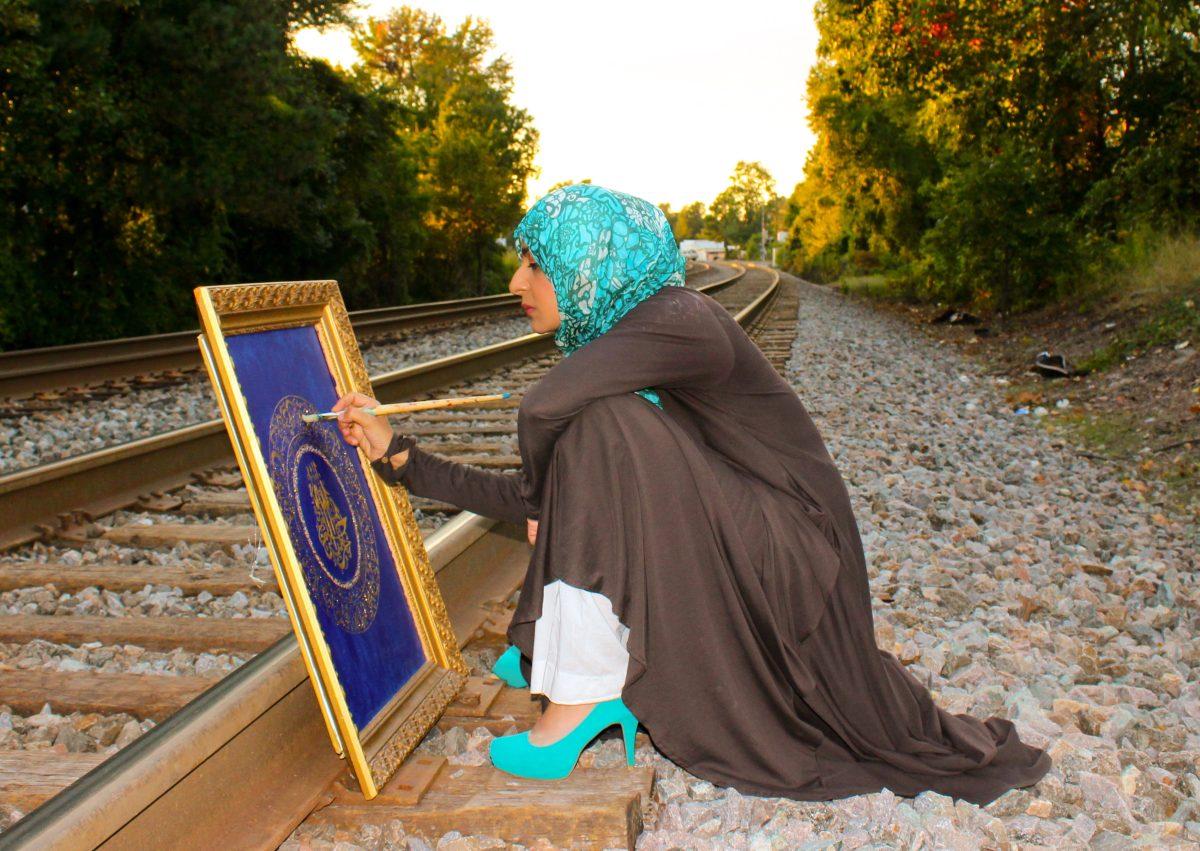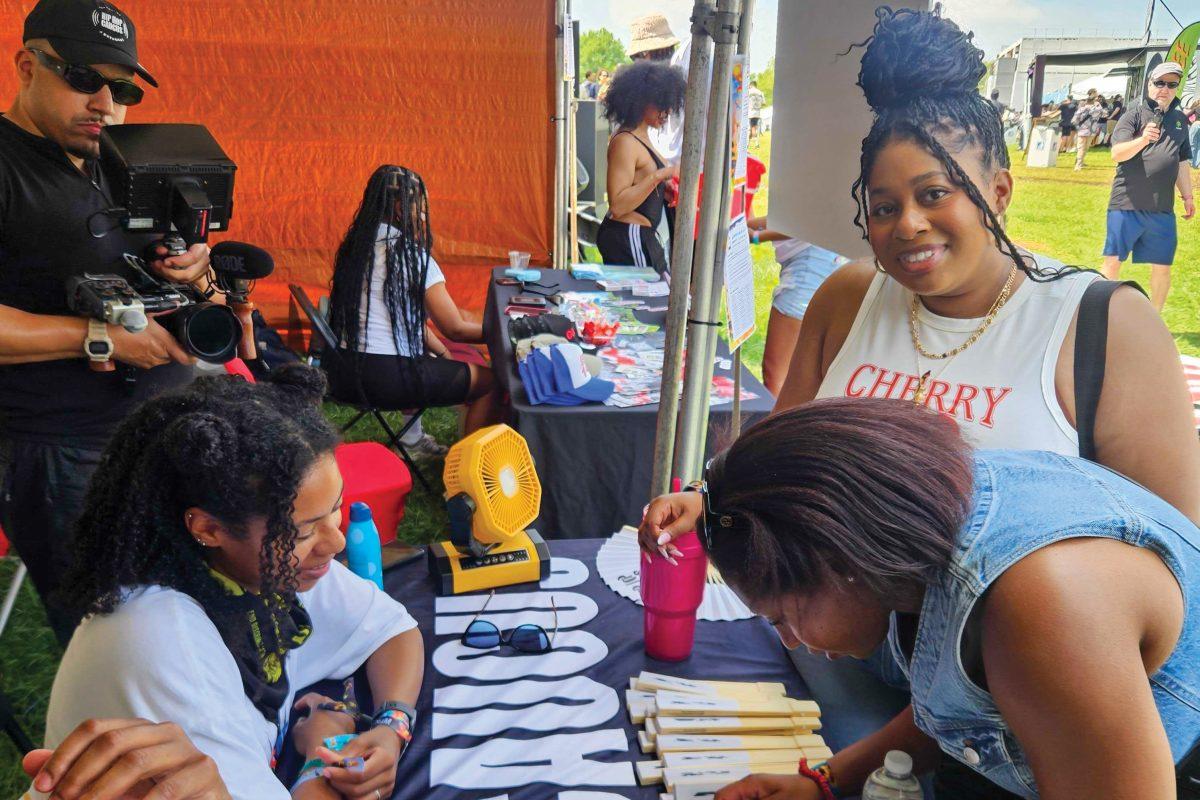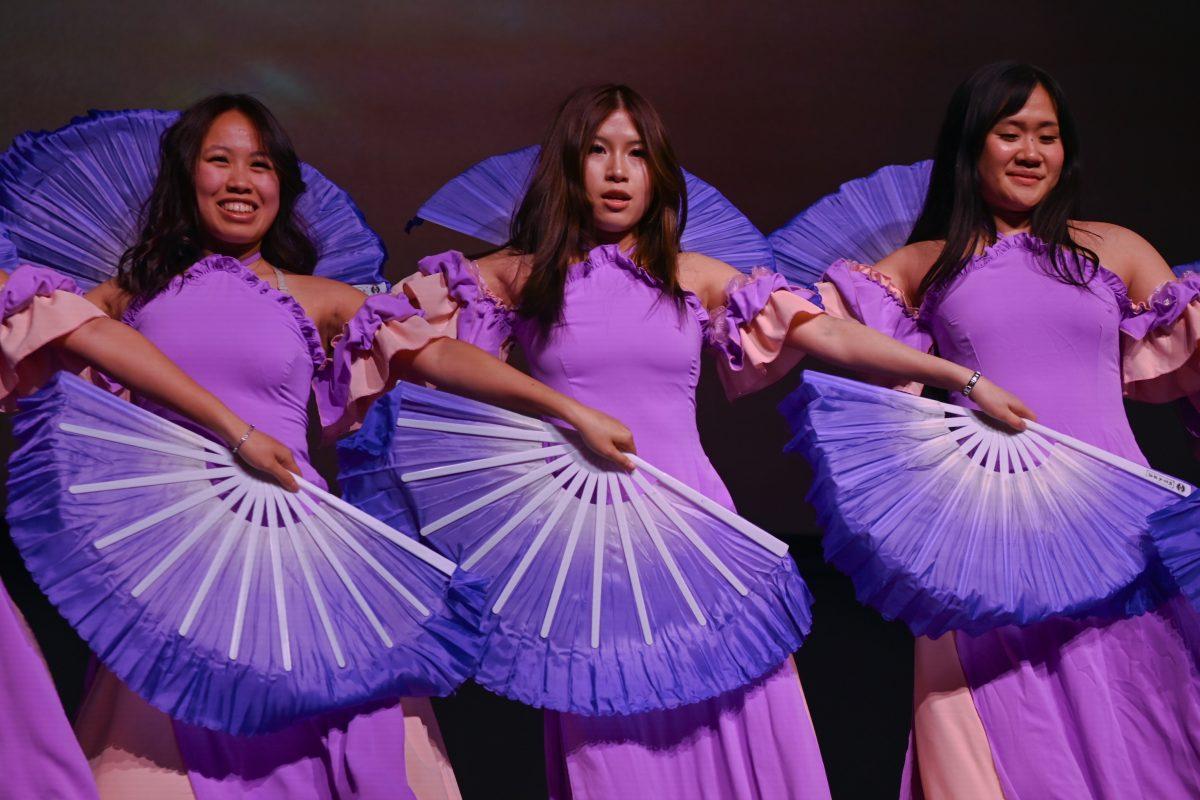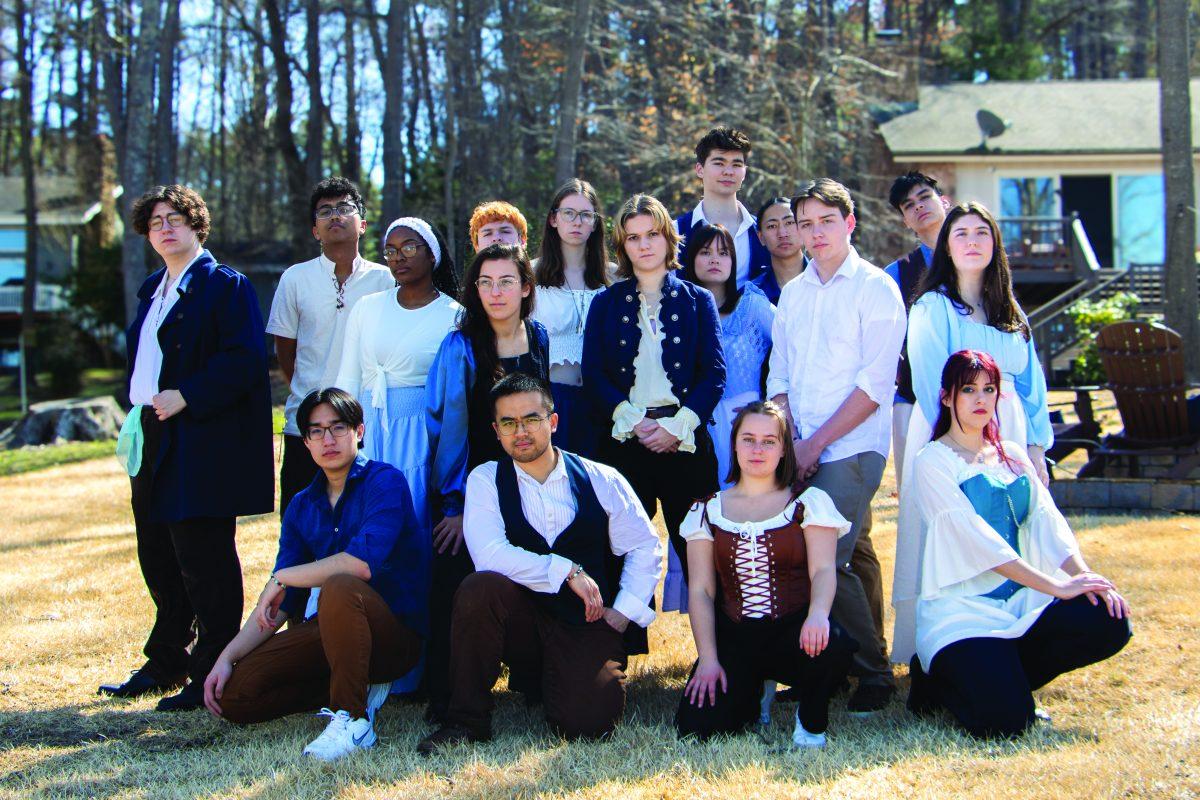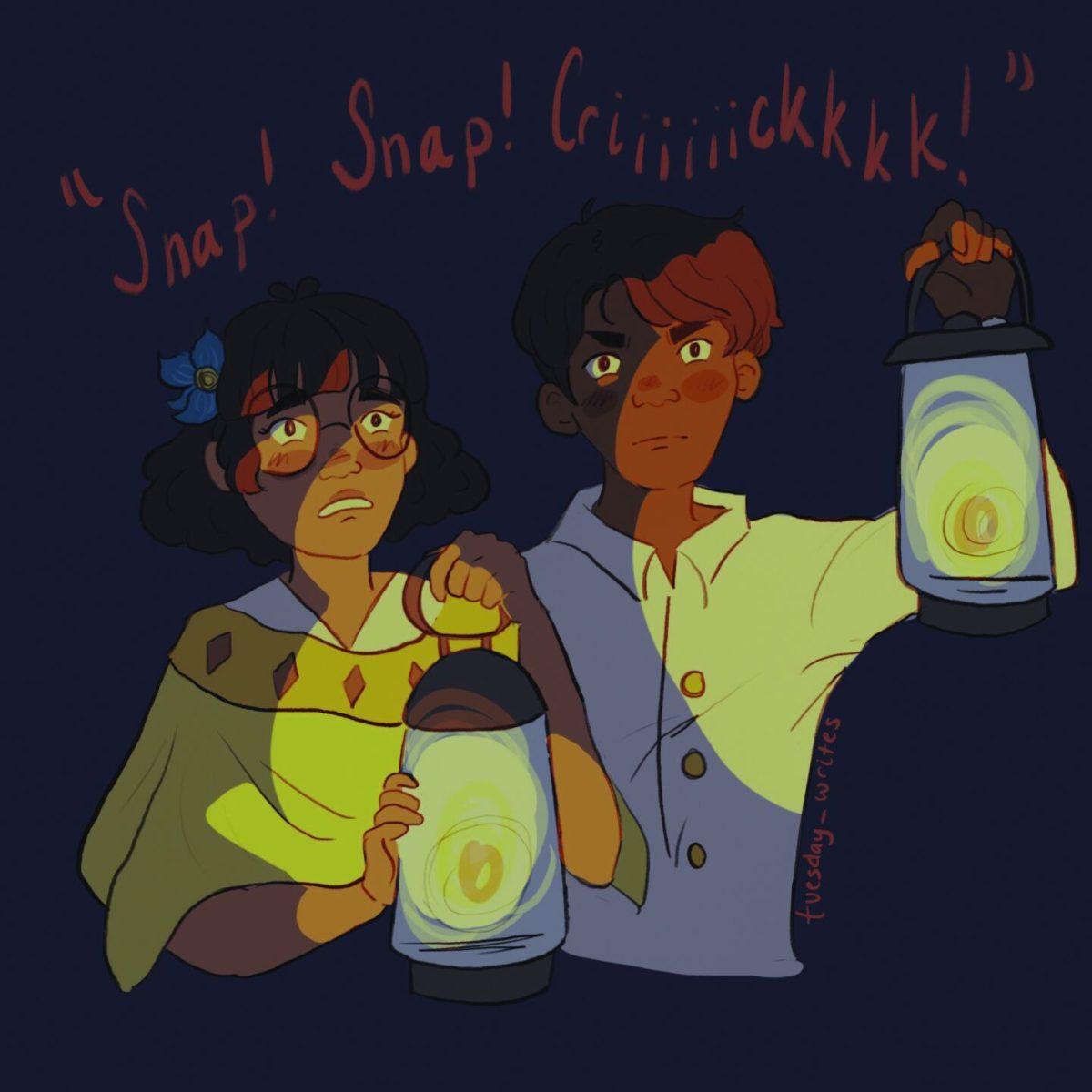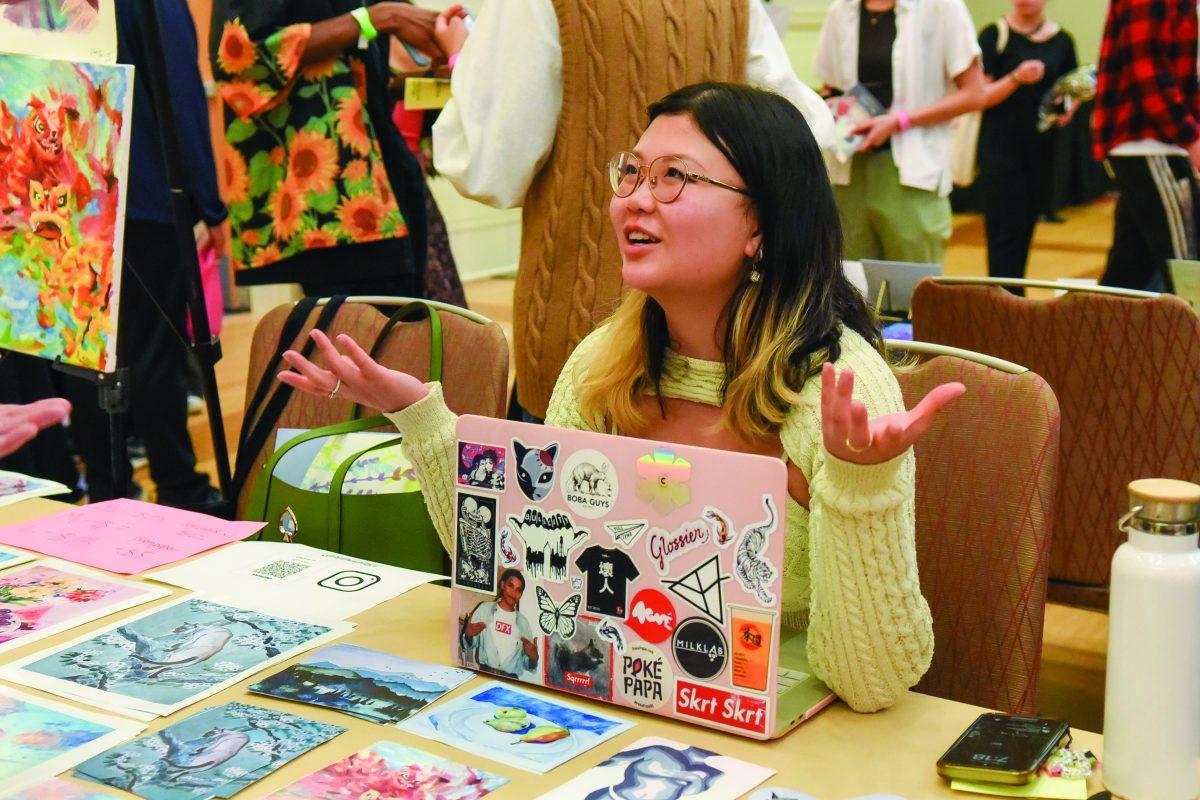Despite growing up in a community where careers in the arts were not encouraged and professional artists were few and far between, becoming an artist was not a choice for Kulsum Tasnif.
“Art was just part of my life from the time I could hold a pencil,” Tasnif said. “I was very, very lucky that my parents — particularly my mother — really encouraged me because the culture at the time discouraged the arts. For so many years, I was the only artist I knew who was doing this professionally.”
Tasnif, who graduated with her master’s degree in art & design in 2021, was born in England and traveled back and forth between Europe and the Middle East throughout her childhood before moving to the United States as a teenager.
“Every place that I was part of became part of me and my art,” Tasnif said. “Growing up and being part of so many beautiful cultures and so many traditions really translated itself into my art.”
Most recently, Tasnif has been focused on fostering a welcoming community and collaboration within the art sphere. On Sunday, June 26, she opened the first exhibit of Artist Ummah, her recently established collective of Muslim women artists in the Triangle area. “Ummah” is the Arabic word for community and represents Tasnif’s efforts towards building connections amongst overlooked voices in art circles.
As a Muslim woman artist in post-9/11 America, Tasnif has battled to find balance between her identity and her art. In early shows she often felt that she, as the artist, was treated as a spectacle as her art, regularly having to explain her faith in a world where there were few other gallery artists that looked like her. Through Artist Ummah, Tasnif is seeking to mitigate the prevalence of this experience for other Muslim artists.
“[I] wanted to create my own group that included local artists who didn’t always necessarily see themselves represented in traditional gallery spaces,” Tasnif said. “We’re like a haven that encourages authentic self expression and imagination, and we address topics that are relevant to the Muslim community and beyond.”
The exhibit, called LABAIK: a Hajj and Eid Art Exhibit, centers around stories of Hajj and Eid and was put together in collaboration with The Light House Project, which seeks to create spaces for and empower Muslim youth. The organization was founded in the wake of the 2015 Chapel Hill shooting of three Muslim students.
Tasnif has been uplifting and spreading the stories of unheard voices since the beginning of her career. In the 90s, she worked as a humanitarian aid worker in Bosnia and Croatia during the Bosnian War, an experience that she says emotionally dictated in part the direction of her early career. Two decades later, it fueled her series “Journey to the Good Life,” which featured audio recordings of the voices of survivors of war from Bosnia, Somalia, Syria, Palestine and Burma, accompanied by Tasnif’s own paintings illustrating their stories.
After four years of showing “Journey to the Good Life,” Tasnif said she was emotionally drained by the intensity of subject matter which intertwined with personal familial loss. She shifted her focus then towards collaboration and uplifting protest.
“I was interested in this idea of taking protest out of designated spaces and putting [women’s] messages out into the world, because I was noticing that these messages that we had needed to be heard by people who weren’t necessarily in agreement with us or who weren’t even around to hear what we have to say,” Tasnif said. “That’s when the protest purse series was born.”
In her Protest Purse series, Tasnif began to design and create custom made purses for women across the country to display their words of protest.
“I asked women, if there was one message at that point in their life that they would like to say to the world, what would it be?” Tasnif said.
Tasnif’s purses are large and small, decorated beautifully with words and statements such as “survivor,” “justice,” “love,” “immigrant,” and “dreamers welcome.”
“It was an amazingly collaborative project in which all of us came together and we just created this really magnificent story as a collective where we were all protesting something in a very unique way that got our voices heard.” Tasnif said. “We took in a very open-sourced art way out to the world that took on a lot of different meaning with every woman and with every space that it occupied. This wearable art took on a life of its own.”
Tasnif sees her physical art as a vessel to hold years of conceptualization and to communicate storytelling and foster community.
“I create really fast, so, for me, my conceptual processes take the longest,” Tasnif said. “I will be thinking for years about a project, and years worth of research goes into it. So much research and love and dedication goes into each painting, even before the painting. The actual process of painting is pretty fast for me because I think about these details for so long.”
LABAIK: a Hajj and Eid Art Exhibit will be displayed at Apt. N Coffee through July 10. Visit kulsumtasnif.com or @kulsumtasnif on Instagram to keep up with Tasnif projects.


